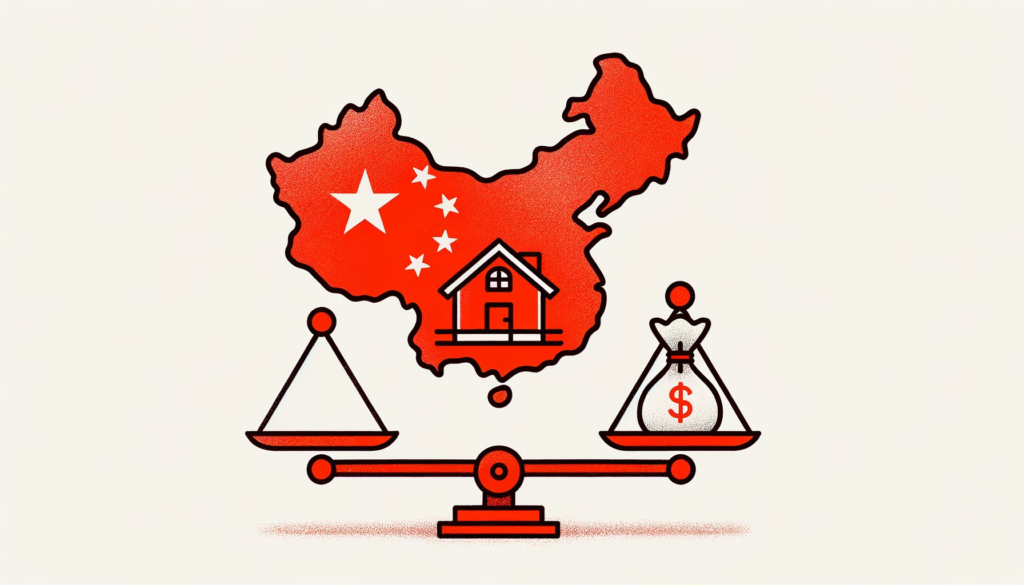What’s going on here?
China has rolled out new measures to stabilize its property market, including lowering down payment requirements and removing the floor for
mortgage
rates, effective May 17, 2024.
What does this mean?
China’s property sector has been in turmoil, and these new measures aim to temporarily boost demand. By lowering down payments to 15% for first-time buyers and 25% for second-time buyers, the government is making homes more accessible. However, S&P Global warns that these moves increase
leverage
, which could result in higher mortgage defaults. The declining property prices, particularly in tier-three cities, could lead to negative equity situations – where homeowners owe more than their property’s worth. This, combined with the removal of the mortgage rate floor, diminishes banks’ buffers for potential losses. Banks in lower-tier cities face heightened risks, escalating their financial pressures.
Why should I care?
For markets: Banks brace for impact.
The property market stimulus has a mixed reception among financial institutions. While temporarily boosting property demand, S&P Global notes the potential for a cascade of defaults, particularly in regions where property prices are expected to decline. The removal of mortgage rate floors adds to banks’ vulnerabilities by reducing their ability to absorb losses, which could exacerbate financial strains, especially in smaller tier-three cities.
The bigger picture: A gamble for stability.
China’s stimulus measures are a calculated risk to stabilize the housing market, but they may carry significant long-term consequences. As property prices fall, the likelihood of negative equity and mortgage defaults increases, potentially destabilizing the broader financial sector. Lower-tier cities like Wuhan and Changsha, which have already adjusted their down payment and mortgage loan
interest
rates in line with national directives, are particularly exposed to these risks.

